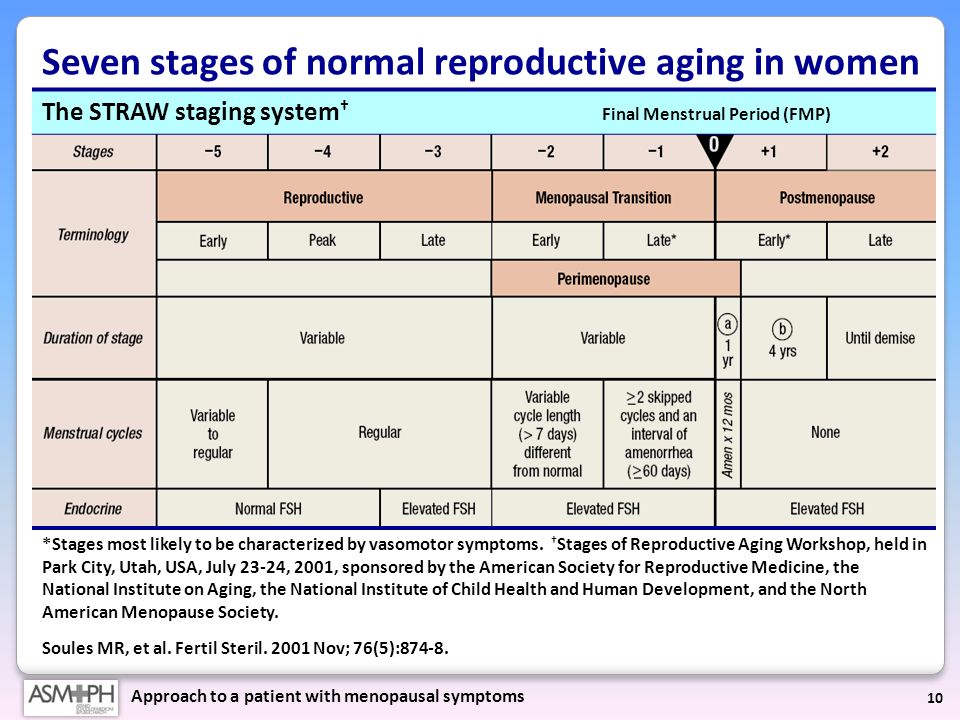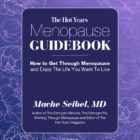
In this time of stay at home isolation, millions of women are not able to go to their healthcare providers for routine care. And for women in perimenopause and menopause, that creates a lot of stress for dealing with work, relationships and self-esteem. As a women’s wellness and menopause expert and author of the best selling book, The Estrogen Fix, I wanted to share with you some general information about major transitions in life that are often confusion: namely perimenopause and menopause. I hope this excerpt from my book, The Estrogen Fix will help you understand three areas that are often confusing: Menstruation, Perimenopause and Menopause.
When I asked my 95 year old mother to define a woman, she immediately said, “soft and gentle, womanhood, become old enough to get married and have a family, love, tenderness and understanding.” Then she said, “As a little girl I used to sing the nursery rhyme, “girls are made of sugar and spice and everything nice.”
If a reproductive endocrinologist had written that rhyme, I’m sure the sugar and spice would have included a splash of estrogen. Puberty. Menstruation. Pregnancy. Perimenopause. Menopause. All of these changes involve estrogen. Let’s time travel through a woman’s life and examine each of these biological transitions and the role that estrogen plays in them. This journey will help you understand what is happening to your body and how this eventually ties into menopause and your estrogen window.
Puberty marks the awakening of hormones and signals the beginning of fertility in girls and boys. It is a time of development—generally between 10 to 13 years of age for girls, 11 to 14 for boys—when a child’s body turns into an adult’s. Everyone is born producing some estrogen, but when girls enter puberty, their ovaries begin to produce significantly more of it. (Boys entering puberty produce more of the hormone testosterone.) The outpouring of estrogen and androgens during puberty causes significant physical and emotional changes. Girls develop breasts, body hair grows in the armpits and pubic area, hips and butts become curvier, hair on legs and arms becomes darker, body odors are more noticeable, acne may develop as a result of oilier skin, mood swings occur, and thoughts of romance and sexual attractions are frequent. It’s also the beginning of menstruation.
Menstruation, or menses, is the monthly shedding of the lining of the uterus. Once menstruation begins, it signals puberty and the beginning of reproductive life. Initially, menses are usually very irregular because of fluctuating hormone levels. This fluctuation has a major impact on mood that usually evens out. Since menstruation usually occurs every 21 to 35 days for two to seven days, it is commonly referred to as a period. The first period a young woman has is called menarche; it usually occurs between the ages of 10 and 14—sometimes earlier, sometimes later. It’s important to remember at what age your first period occurred for your medical history. Women who began their periods before age 12 have about a 20 percent higher breast and uterine cancer risks compared to those who began their periods after age 14.2-3
A woman can expect to menstruate from about ages 12.5 to 51, roughly 35 to 40 years. During that time her ovaries have a reservoir of eggs and some will be released each month throughout her reproductive years to make pregnancy possible. Women usually stop menstruating when they are pregnant or breastfeeding, but during that time their ovaries continue to produce eggs each month so it doesn’t change the onset of menopause, which happens when the last egg has been released. The dwindling number of eggs ushers in irregular hormones and perimenopause.
Perimenopause literally means “around menopause” and refers to the months and years (up to ten) leading up to the last menstrual period plus one year after the last menstrual period, which defines menopause. Because the symptoms are most intense in the last two years of perimenopause, some women think they are in menopause, although they still are having irregular periods.
Perimenopause is a time of widely fluctuating hormones and the stage when a woman’s menstrual cycles begin to change and become more and more irregular. Estrogen and progesterone transition from balanced and synchronized to unbalanced and unsynchronized. Because the ovaries contain fewer eggs, they become more resistant to ovulation, which means releasing an egg, so the pituitary hormone follicle-stimulating hormone (FSH) increases in an attempt to motivate the ovaries to release an egg. Increasing FSH levels determined by a blood test suggests that a woman is in perimenopause.
In 2012, a group of researchers from five countries and multiple disciplines reviewed all the blood tests and markers and symptoms of menopause studies from around the world and came to an agreement on how to define perimenopause. The large study was called STRAW (Stages of Reproductive Aging Workshop). The researchers couldn’t make sense of the information when they tried to define menopause and perimenopause symptoms by age. But when they looked at the onset of menopause as time “0,” and then counted both forward and backwards by years, suddenly the information lined up. Perimenopause is defined in that study as the two years leading up to menopause, and menopause is defined as one year after the last menstrual period. As you will discover in the chapters to come, it’s the onset of menopause and not age that will define your estrogen window.

Stages of Reproductive Aging
Perhaps you’re hot one minute, pulling on a sweater the next because you’re chilled. Maybe your thinking is a bit foggy and your mind doesn’t seem as sharp as it once was. Do you have heart palpitations? Not interested in sex? Do you urinate more frequently than you used to? Are you 50 years old, give or take a few years? There’s probably nothing “wrong” with you. Your body is transitioning toward menopause.
Most young girls have the “talk” with their mothers or other women about menstruation, sex, and having babies. When a girl gets her period, she learns that she’s fertile and can expect to menstruate every month. On the other end of the age spectrum, women typically don’t have the “talk” with their mothers about menopause and aren’t taught what to expect. And your experience can be very different from those of your friends—either much easier or much more challenging. For most, perimenopause comes on slowly and without much notice, You have an occasional heart palpitation. You find that it takes you longer to become sexually aroused. You’ve added a few pounds around the middle. Over time, more symptoms crop up, intensify, and become one perfect storm.
For many women, perimenopause and menopause are synonymous with getting old. Just saying it carries a negative burden. The good news is, the more you understand your estrogen window, the more you will be able to put things in perspective and gain control over your symptoms.
Common Perimenopause Symptoms
- Acne
- Anxiety
- Bloating
- Breast tenderness
- Crying
- Decreased libido
- Facial hair
- Forgetfulness
- Frequent need to urinate
- Hair loss or thinning
- Headaches
- Hot flashes
- Interrupted sleep
- Irregular periods
- Mood swings
- Night sweats
- Urinary incontinence
- Vaginal dryness
- Weight gain, especially around the middle
“What is happening to my body and my brain?” Are you a woman who is used to juggling work, social, and family obligations and once slept through the night and managed your days? Now, do you suddenly find yourself waking up at 4:00 a.m. with heart palpitations or feeling sleepy, anxious, or teary during the day? Do you sometimes lose focus and have a shorter fuse than you used to? Throw in a few mood swings, headaches, and forgetting where the car is parked and you begin to wonder if something is physically or mentally wrong with you.
Hormonally, perimenopause looks like going through puberty backwards, and it brings with it some of the same experiences. During perimenopause, shifting production levels of the hormones estrogen and progesterone cause periods to become irregular and vary in the amount of flow. A woman may have regular periods for three months, then none for six, then periods that arrive regularly for several months, or, periods for six months, none for four, then heavy flow or light spotting in between, and so on. The variables all depend on the individual woman. For the majority of women, perimenopause occurs during their 40s, but like everything else on this journey, it may occur earlier or later.
The average length of perimenopause is four years, but again, since everyone is different, that, too, can vary. Some women have symptoms for ten years. Over time, estrogen levels will drop to pre-puberty levels, periods stop entirely, and it is no longer possible to become pregnant. During perimenopause, estrogen levels plunge and soar like a wild hormonal roller coaster ride. Instead of estrogen and progesterone levels working together with precision, they work somewhat independently. Progesterone levels don’t typically rise unless the ovary ovulates an egg. Progesterone’s primary role is to stabilize the uterine lining so an embryo can implant (the word progesterone stems from “pro-gestation”); but progesterone also plays a role in a woman’s moods by attaching to the same sites in the brain as the neurochemical GABA, a hormone that helps reduce anxiety. Lower progesterone levels affect women differently, but persistently low levels are believed to play a major role in the mood changes and swings so often experienced by women during perimenopause and menopause.
As uncomfortable and as aggravating that perimenopause can be, know that like puberty, it is only temporary and will end. The menopausal transition symptoms typically decline significantly two years after your last menstrual period, which is one year after menopause begins.
Your doctor may order an FSH blood test to see if you are in perimenopause. Values above 11 mIU/ml may suggest early perimenopause and ≥ 20 clearly identify perimenopause. Another test that can be ordered is called anti-mullerian hormone or AMH. For this test, the lower the value, the closer to menopause, although the FSH test is not well suited to telling you how close. In a well done study from the University of Pennsylvania, 6an AMH level below 0.20 ng/ml suggested that the median time to menopause was 5.99 years for women ages 45 to 48 years and 9.94 years for women in the 35 to 39 age group. With AMH levels above 1.50 ng/ml, the median time to menopause was 6.23 years in the older group and more than 13 years in the youngest age group. Smoking significantly reduced the time to menopause.
Menopause is the last hormonal transition phase. The zigzagging estrogen and progesterone levels I mentioned earlier continue to trend downward until they reach very low baseline levels. There are no longer any eggs within the ovaries (or no ovaries due to surgery) and FSH levels remain constantly elevated, usually above 40 mIU/ml. The medical definition of menopause is for a woman to go one year without a period, which typically occurs when she is in her late 40s and early 50s in Western countries.
Compiled by Mache Seibel, MD |
You can find out more about menopause, estrogen and other treatments for midlife in my best-selling book TheEstrogenFix.



